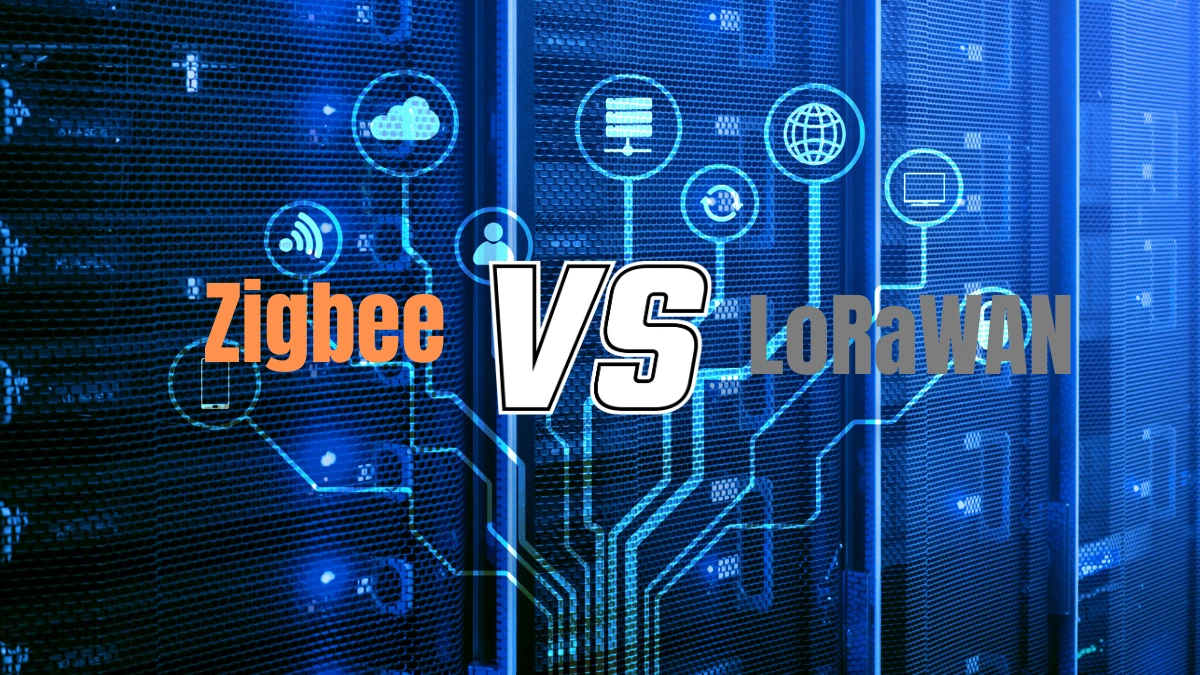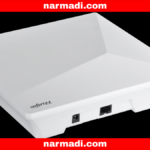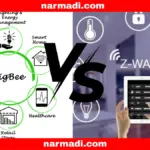Zigbee and LoRaWAN are both technologies that support the IoT (Internet of Things). However, of course, the difference between Zigbee and LoRaWAN is quite noticeable in its application.
Although they are both wireless technologies, there are differences between Zigbee and LoRaWAN that make the comparison, for example, Zigbee relies on high security while LoRaWAN does not have a high level of security.
This article will provide more information about the differences between Zigbee and LoRaWAN so that you can help you choose the better protocol for your device.
Also Read
Table of Contents
Zigbee

Zigbee is a remotely organized convention for short-distance transmission, which is appropriate for information transmission between an arrangement of electronic components with brief transmission removal, moo transmission rate, and low control utilization.
It takes its name from the zigzag dance of honeybees because bees always dance with their wings to convey the location of pollen to their companions.
As a short-range, low-complexity, low-power, low-cost wireless communication technology, Zigbee wireless communication technology is based on the IEEE 802.15.4 wireless standard in networking, security, and application software.
Zigbee’s wide application in shrewd domestic and Web of Things businesses demonstrates that it is a dependable and productive remote organizing arrangement.
To offer the assistance you consider, here are Zigbee’s pros and cons:
Pros
- Adaptable organized structure: There is more than one Zigbee arranged structure, but due to Zigbee’s brief communication and frail capacity to enter dividers, arranged development is troublesome.
- High security: Zigbee embraces the AES-128 encryption calculation, which gives three-level security amid information transmission.
- Brief delay: Brief delay implies Zigbee reacts promptly, more often than not switching from resting mode to working mode inside 15ms. What’s more, one hub can interface to the arrange inside 30ms, more control sparing.
- Expansive organize capacity: Zigbee organize incorporates up to 255 Zigbee arrange hubs, one is the ace gadget and the other is the slave gadget.
Cons
- High cost: Due to the brief communication separate of Zigbee, the taken a toll is tall for applications that require the arrangement of a huge number of hubs. And when something goes off-base, the substitution taken a toll will be high.
- Limited transmission coverage: The limited coverage means that Zigbee is mainly applied in indoor environments rather than outdoors.
- Complex deployment: Zigbee wireless networks involve a large number of terminal nodes and gateways, so the network is complex and network expansion is difficult.
LoRaWAN

LoRa stands for long-range radio, which is a low-power WAN wireless standard adopted and promoted by the American Semtech Company.
Based on spread range innovation, it is one of the LPWAN remote communication innovations, performing well in terms of transmission separation and control utilization.
LoRa has a longer remove than other remote advances for the same control utilization, giving a basic framework with a long range, long battery life, and tall capacity for scaling sensor systems.
The association scope of LoRa is 3-5 times that of conventional radio recurrence communication. To this day, LoRa has been popularized around the world and steadily connected to the Internet of Things.
To offer the assistance you consider, here are LoRaWAN’s pros and cons:
Pros
- Aces Longer extend: This is one of the fundamental preferences of LoRa innovation. The communication run of LoRa sensors is measured in kilometers.
- Moo control breaks even with more battery: Moo control utilization implies LoRa gadgets have a longer battery life, which can reach more than 10 a long time of battery life.
- Extraordinary insusceptibility to impedances: LoRa embraces spread range innovation, which significantly progresses the anti-interference capacity of LoRa remote communication.
- Simple and quick sending: The LoRa arrange embraces a star topology, handles less transmission capacity, and is simple to extend.
Cons
- Not perfect for huge information payloads: LoRa is not perfect for expansive information payloads as it forms less transmission capacity and transmits fewer information payloads.
- Unlicensed radio systems: LoRaWAN works on unlicensed radio systems, and as LoRa gadgets and organized organizations develop, you may have involvement impedances on that recurrence.
- Less secure: The LoRa network layer and application layer are generated from the same root key and random numbers and are not isolated from each other.
So there you have it! The diference between Zigbee and LoRaWAN to be used as a consideration for your smart home devices. In the future, it is hoped that these two technologies can continue to innovate so that each other can complement each other in supporting IoT.
As additional information, every Zigbee and LoRaWAN product on the market must go through a test and certification process first. If you have difficulty taking care of the test and certification process, you can contact the Type Approval Certification Service for ITC Products in your country.











